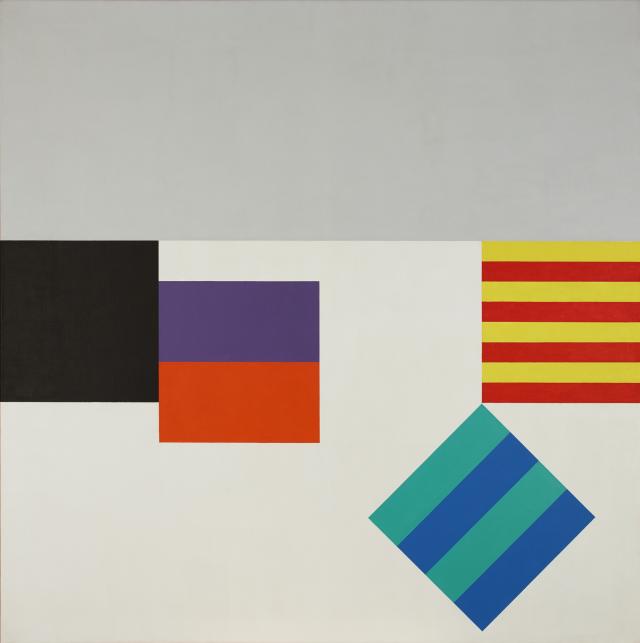Translokation II is one of Camille Graeser’s late works, the result of a long and fertile experimentation in the visual arts that spanned five decades, patiently maturing over those many years. Starting with his initial research in Concrete Painting in 1938, the artist would essentially work thereafter by groups of pictures (drawings, canvases, and reliefs) that were based on an idea of composition in common. Graeser would explore their infinite variations to the point of reaching their formal limits.
His conceptual and rational approach granted considerable importance to the process of elaborating the composition, a process that played out in sketches and preliminary drawings, often small-format works on paper. These functioned like veritable research laboratories focusing on the subdivision of the image, the distribution of colours, and the proportional relationship of the different elements that would eventually be incorporated in the final painting. Their combination on the surface was meticulously studied and defined by mathematical calculations and precise ratios, according to a constituent principle of equivalence that applied to the forms and the choice of colours.
In the abstract reduction that inevitably characterised his compositions, Graeser nevertheless succeeded in devising a great range of visual themes around the construction of the pictorial field, e.g., Relationen, Konkretionen, Äquivalenzen and Dislokationen. The artist painted the Translokationen series between 1968 and 1970, and to create a tumbling effect, he chose to shake up his usual ways of constructing the composition, shifting the constituent modules of his horizontal framework and even tipping them over from one field into another. This incipient movement may well embody the successful conclusion of his endless quest for perfect balance subjected to an eternal new beginning.
His conceptual and rational approach granted considerable importance to the process of elaborating the composition, a process that played out in sketches and preliminary drawings, often small-format works on paper. These functioned like veritable research laboratories focusing on the subdivision of the image, the distribution of colours, and the proportional relationship of the different elements that would eventually be incorporated in the final painting. Their combination on the surface was meticulously studied and defined by mathematical calculations and precise ratios, according to a constituent principle of equivalence that applied to the forms and the choice of colours.
In the abstract reduction that inevitably characterised his compositions, Graeser nevertheless succeeded in devising a great range of visual themes around the construction of the pictorial field, e.g., Relationen, Konkretionen, Äquivalenzen and Dislokationen. The artist painted the Translokationen series between 1968 and 1970, and to create a tumbling effect, he chose to shake up his usual ways of constructing the composition, shifting the constituent modules of his horizontal framework and even tipping them over from one field into another. This incipient movement may well embody the successful conclusion of his endless quest for perfect balance subjected to an eternal new beginning.
